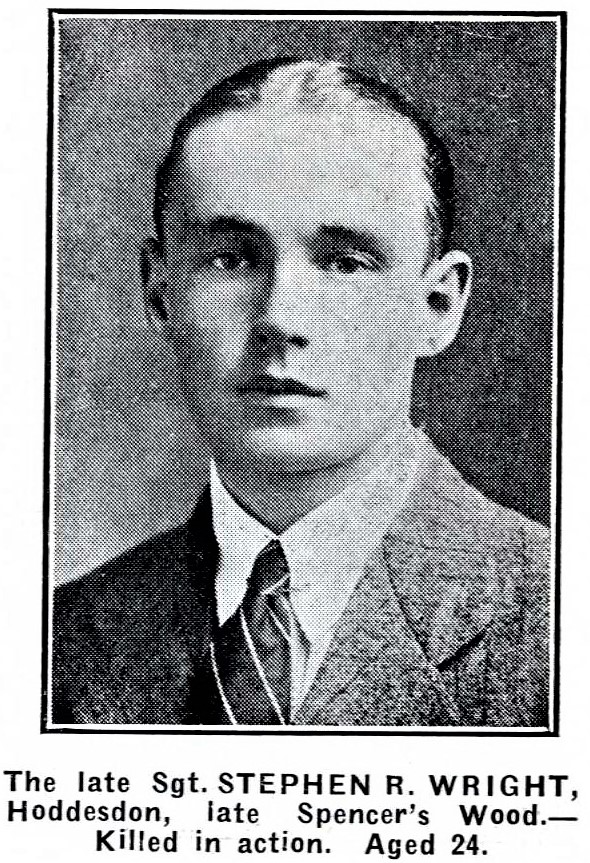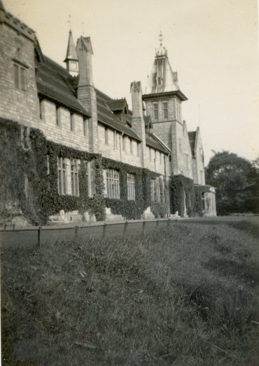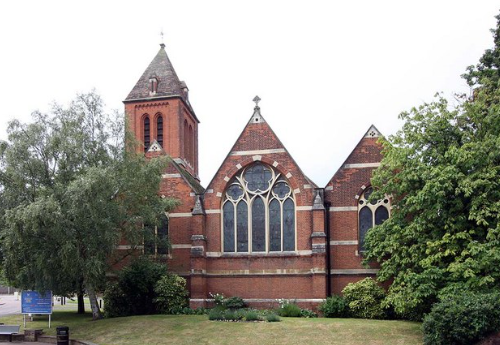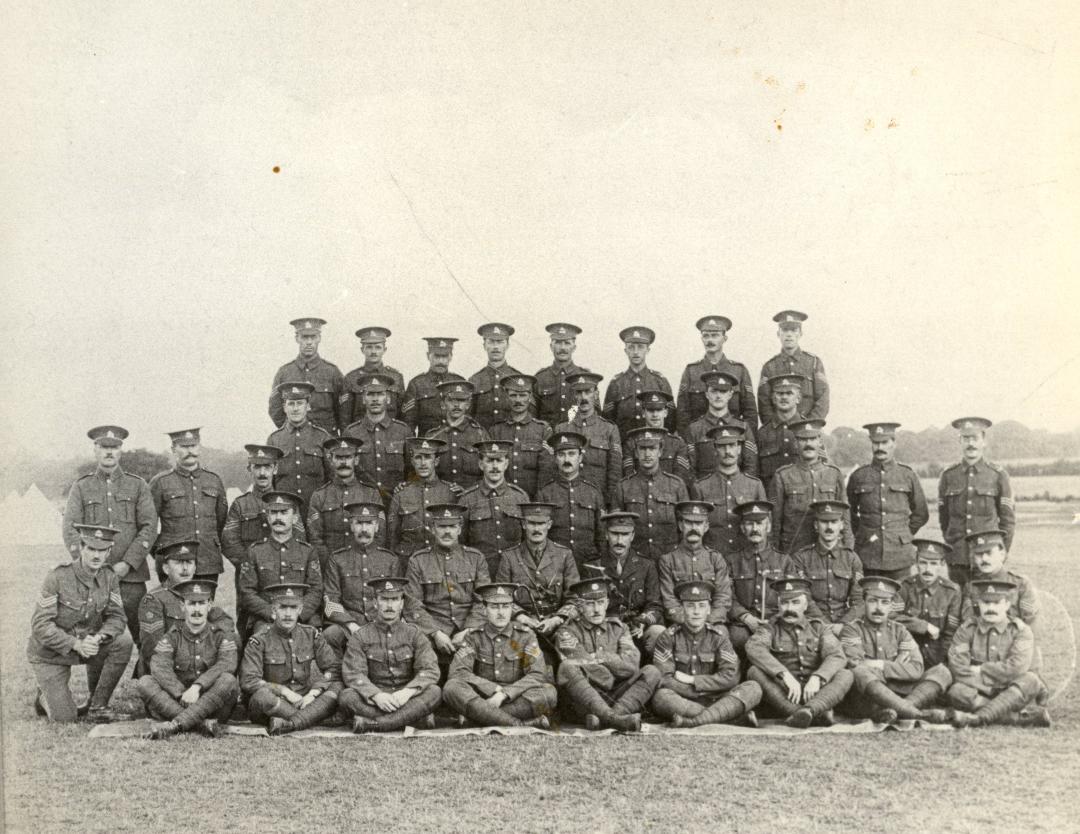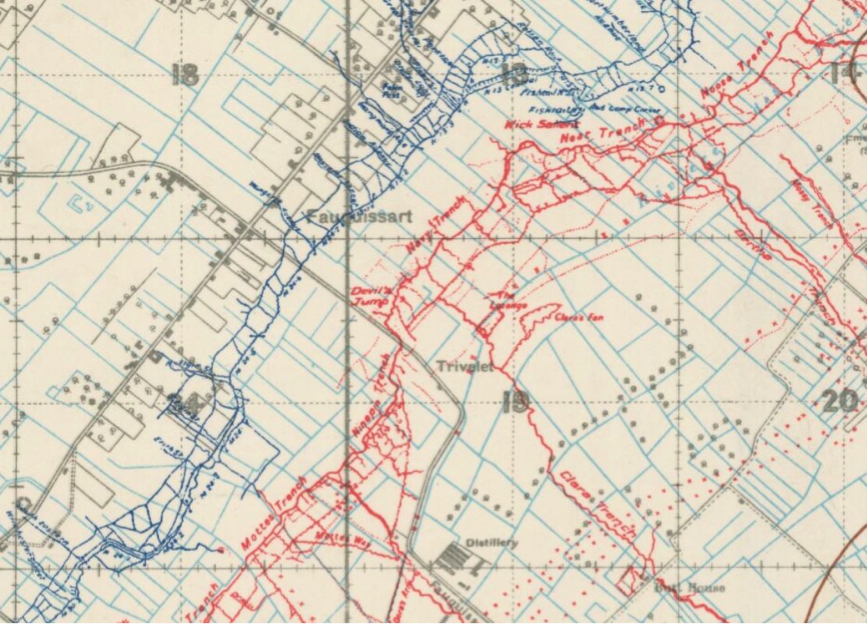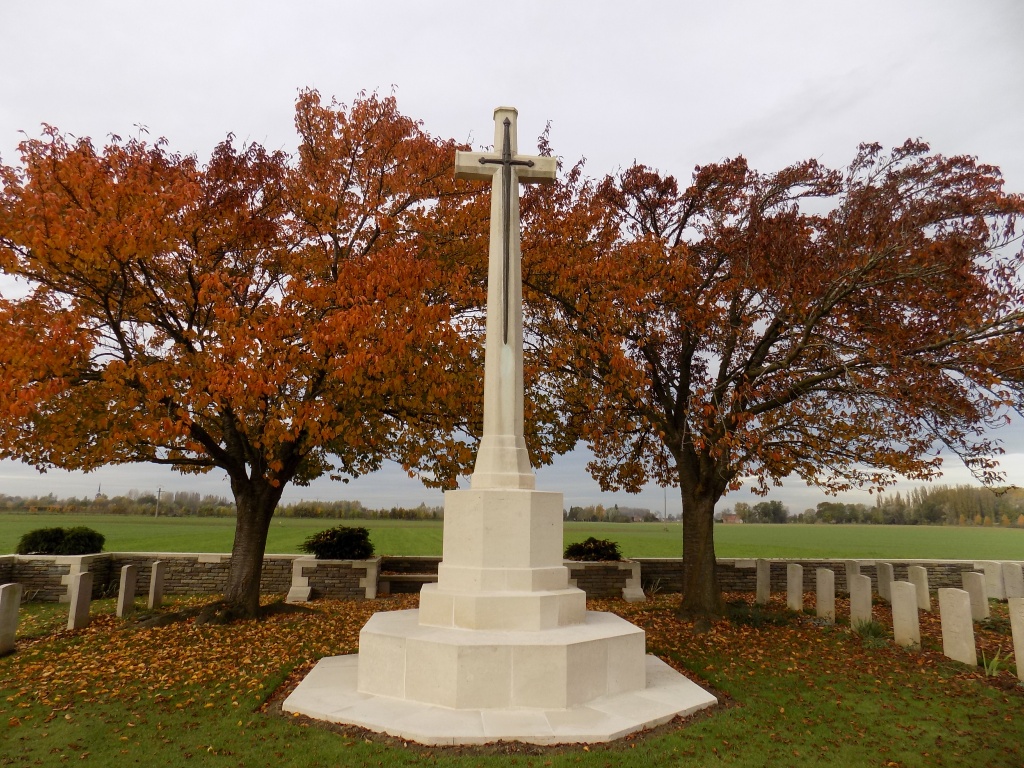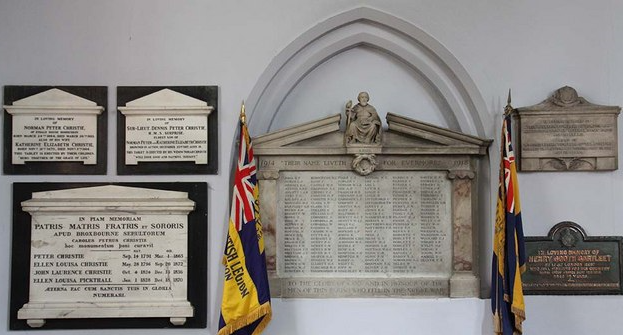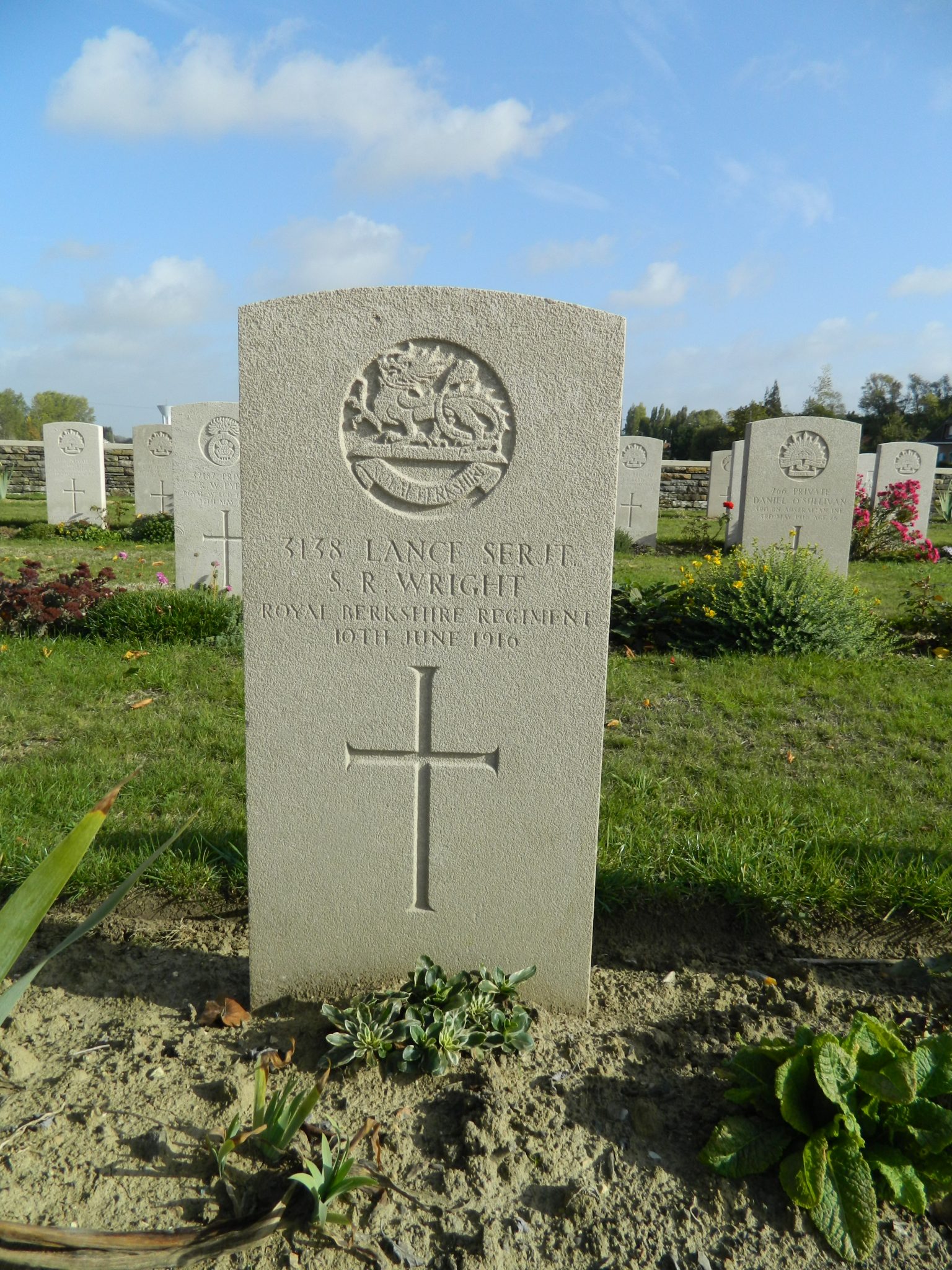Stephen Reginald Wright
Lance Sergeant Stephen Reginald Wright, of the 2nd/4th Battalion, Royal Berkshire Regiment (Princess Charlotte of Wales’), Regimental Number 3138, was killed in action on 10th June 1916, aged 24, and is buried at Rue du Bacquerot (13th London) Graveyard, Laventie, France.
Early Life
Stephen was born on 10th February 1892, the only child of Stephen James and Eliza (née Knibbs) Wright, at East Ilsley, Berkshire. A brother, Ernest, was born and died in the first quarter of 1895. In 1901 the family was living at Kentwood View, Tilehurst, Berkshire. Stephen senior was the manager of an iron works. He had been born in Slough 1. Eliza was a Board Schoolmistress who was originally from Maidenhead. Tilehurst was a village 2¼ miles south west of Reading, now a suburb of Reading. There was a National School in Tilehurst that had been founded in 1819. It was probably this school that Eliza Wright taught in. By the census of 1911 Stephen senior and Eliza had moved to the School House, Spencer’s Wood, Reading. Spencer’s Wood was a village 4 miles south of Reading. Stephen was working as an Engineers’ Foreman and Eliza was a Headteacher. It was unusual for a wife to continue to work after she was married, but not only did Eliza work, she also took on greater responsibility when she became Headteacher.
Kelly’s Directory Berkshire 1915 page 233
The infant school was built by Frederick Allfrey in Spencer’s Wood, in 1890. It closed as a school in 1915. Stephen began his schooling at Swallowfield Park School, Reading, before moving up to The Collegiate School in Reading for his Secondary Education. Before entry to College, Stephen studied a Practical Chemistry course and a freehand drawing course. He took and passed the Preliminary Examination for the Certificate with a special mention made of Science. It does not specify if this means that he was awarded a distinction in that subject. College records show that he achieved 68.7% in his entrance exam, placing him 13th in the order of merit of the applicants. By the 1911 census, Stephen junior was a student at Winchester Diocesan Training College.
Life in Winchester
Stephen left home for Winchester Training College in 1910 for a two year course that started in September. We know from the College magazine, The Wintonian, that Stephen was a talented musician. The 1910-1914 collection of magazines writes about a Farewell Concert:
Mr S R Wright opened with a well-executed pianoforte solo, The Rustle of Spring’ 2Mr Wright now obliged again, this time with the song The Deathless Army’.
The Deathless Army was written in 1826 with words by Frederic E Weatherly 3. It was an apt choice for a College Concert because of their involvement in the Territorials.
I am a bolger sold- I mean I’m a soldier bold
I’m not so young as I used to be before I got so old
I am a regular toff I am, I am, I am, I say I am
But you can’t tell what’s inside the jar by the label on the jam.
Chorus
For I am a soldier, a territorial
The girls will say when I’m on parade
There’s one of the boys of the old brigade
If ever I go to war I’ll drive the enemy barmy
Hi, hi, never say die
I’m one of the deathless army.
The same article also reported that he acted as accompanist throughout the Concert. A later section in the Wintonian, commended him on achieving the School Teacher’s Music Certificate.
Life as a student was very busy. They had a full timetable of subject lectures and attendance at Chapel was compulsory. Sport played a very important part in student life. There were regular fixtures against football and cricket teams from other local colleges. There was an annual Sports Day and regular meetings of the Harriers, A cross country running club where the route was laid down by a hare’. The students held regular Smoker’ Concerts where the entertainment was of a musical nature or poetry recitals. Indoor sports which included competitions in bridge, draughts and ping pong were enjoyed. There was a debating society when a variety of subjects were discussed.
The other significant aspect of student life at Winchester was the Territorial Force. By 1910 when Stephen began his course the original Volunteer Force at the College had become B Company of the 4th Territorial Battalion of the Hampshire Regiment. This was more than just a change of title. The students no longer enrolled, they enlisted in the new Territorial Force. They were subject to military discipline and because of these changes, involvement altered from being automatic to being a matter of choice. Most of the students still chose to enlist.
At the end of his course, Stephen was graded with A for Music and Drawing, and C for Teaching and Science. He achieved a Class 2 pass in the Archbishops’ Religious Knowledge Examination. In his final Board of Education Exam, Stephen was awarded a distinction for Music.
When Stephen left the Training College he started his teaching career. There is some confusion as to where Stephen’s first teaching appointment took him. The Wintonian Magazine published details of where former students were working or living after they left. Stephen was reported to be at School House, Spencer’s Wood, Reading. This was the family home. As his mother was the Headteacher at that school it is possible that she gave him his first job, but it could equally be that he was simply residing at home while waiting to begin his first teaching appointment. The UK Soldiers Who Died in The Great War record gives his residence at the time of his death as Hoddeston.
St Catherine and St Paul Church, Hoddesdon
He was included on the Hoddesdon War Memorial but probably because of his parents’ connection there. The Wintonian Magazine, in a later edition, also has him reported as being at Cranbourne, Windsor Forest. A newspaper report published after his death comments on him having spent some time as assistant master at Cranborne, Ranelagh School, which is in Bracknell, Berkshire. By the time he enlisted Stephen was working in Cheltenham. A report in the Gloucestershire Echo from Tuesday 20th June 1916 tells us:
Mr L.V. Wheeler, headmaster of Devonshire Street School, Cheltenham, has received a letter from the mother of Sergt. S.R.Wright, Berks Regiment, that her son, who before enlisting was an assistant master of that school, has been killed. Although of the many young schoolmasters who had enlisted from Cheltenham schools several have been wounded, Sergt. Wright was the first to lay down his life. He was the only child of his parents, who reside at Hoddesdon, Berks. Trained at Winchester College [sic] he came to Cheltenham about three and a half years ago,4 and during the time he was in the boys’ department of the Parish Church School he won the affectionate esteem of the boys and the staff and of many other friends in the town. He was a very capable and enthusiastic musician, an excellent pianist, and in the absence of his chief, who is organist of the Parish Church, deputised for him in that capacity.
The Call To Arms
Although Stephen was working in Cheltenham, he chose to enlist in his home town of Reading. Stephen joined the Royal Berkshire Regiment 2nd/4th Battalion (Princess Charlotte of Wales’). The 2nd/4th was formed at Reading on the 6th November 1914 as a second line unit. It was formed from the overspill from the 1st/4th. After a move to Maidenhead for training, they were treated to lunch by the townsfolk of Maidenhead on Christmas Day. They were attached to the 2nd South Midland Brigade in 2nd South Midland Division in Northampton, in February 1915. Here they underwent further training until April 1915 when they moved to Chelmsford and then on to Salisbury Plain in March 1916. While in Chelmsford they assisted in the digging of trenches for the defence of London.
Stephen Wright, seated, next to last man on the right second row from the front 5
King George V inspected the Division at Bulford, near Salisbury, on 5th May 1916. The Division was warned in May that it would go on overseas service. The Division landed at Le Havre on the 27th May and then entrained for the area of Merville in Northern France, but without the Ammunition Column which temporarily remained in Le Havre.
By June 10th 1916, Stephen had reached the front line. The War Diary reported on that day:
Location “ France “ Trenches
Relieved 10th SWB 6 between 12:30am and 5:30am. Whole Battn in front line from FAUQUISSART section3 ½ miles S.E. of LAVENTIE. 2/1 BUCKS battn on our right.1st AUSTRALIAN DIV on left. 2/4 OXFORDS in support in LAVENTIE 2/5 GLOSTERS in support on 2/1 BUCKS. Casualties 2 O.R. killed, 1 wounded. HQ at RED HOUSEWeather cold and wet.
Trench map courtesy of the national Library of Scotland
The same newspaper report previously quoted (Gloucestershire Echo on Tuesday 20th June 1916), gives us some evidence of how Stephen died.
He joined on about 18 months ago, but had not been at the front a month when he was killed. His comrades in letters to his mother, state that the young soldier was in a firing bay with two others when a shell burst right over them. The two others were killed at once, but Sergt. Wright was alive when help came. He was, however, terribly injured and died on the way to the dressing station.
A tribute published in the Reading Mercury Saturday 22 July 1916 quotes an officer as saying:
All the men had learnt to love and respect him as one of the best sergeants in whom they could put their trust.
Stephen was buried in grave 28, Row D, Rue du Bacquerot (13th London) Graveyard in Laventie. The village of Laventie is 6 kilometres south west of Armentieres. The cemetery was begun by the 1st Royal Irish Rifles in November 1914, and closed in July 1916. It is also known as the Red House Cemetery. Stephen was survived by his mother.
He is commemorated at Hoddesdon, Hertfordshire and Spencer’s Wood, Berkshire. (see below)
Researcher and Author: Dee Sayers
Wright’s Signature – The Students’ Register photograph by Dee Sayers
Footnotes
- Slough at this time was in Buckinghamshire. The county border changed in 1974 and Slough became part of Berkshire.
- The Rustle of Spring , a song by Joseph Cooper
- Frederic Weatherly wrote the lyrics for Danny Boy
- The 3 ½ years mentioned in the report must have included the time that Stephen spent in uniform
- 2nd/4th Battalion, Royal Berkshire Regiment. A group photograph of the Sergeants Mess believed to have been taken in England prior to the Battalion going to France in 1915. Photograph courtesy of The Wardrobe, Home of the Infantry Regiments of Berkshire and Wiltshire (thewardrobe.org.uk)
- South Wales Borderers
Sources
Alwyn Ladell photography. (2018). Home page. [online] Available at: https://www.flickr.com/photos/alwyn_ladell/sets/72157665876163520/ [Accessed 2018].
Ancestry (2018). Home page. [online] Available at: www.ancestry.co.uk [Accessed 2018].
Britishnewspaperarchive.co.uk. (2019). Register | British Newspaper Archive, Gloucestershire Echo Tuesday 20 June 1916. [online] Available at: https://www.britishnewspaperarchive.co.uk/viewer/bl/0000320/19160620/075/0004 [Accessed 30 Apr. 2019].
Britishnewspaperarchive.co.uk. (2019). Register | British Newspaper Archive, Reading Mercury Saturday 22 July 1916. [online] Available at: https://www.britishnewspaperarchive.co.uk/viewer/bl/0000369/19160722/080/0002 [Accessed 30 Apr. 2019].
Commonwealth War Graves Commission, (2018). Home page. [online] Available at www.cwgc.org/ [Accessed 2018].
Geograph (2009). TL3708: St Catherine & St Paul, Hoddesdon, Herts – War Memorial. [online] Available at http://www.geograph.org.uk/photo/1356421 [Accessed 2018].
Geograph (2009). TL3709: St Catherine & St Paul, Hoddesdon. [online] Available at http://www.geograph.org.uk/photo/1348548 [Accessed 2018].
Herts at War (2013). Wright, Stephen Reginald. [PDF] Available at http://www.hertsatwar.co.uk/fluidcms/files/files/Hoddesdon%20Q%20to%20Z/WRIGHT%20Stephen%20Reginald%203138.pdf [Accessed 2018].
Kelly’s Directory (1915). Kelly’s Directory of Berkshire 1915 [online] Available at: http://specialcollections.le.ac.uk/cdm/ref/collection/p16445coll4/id/218251 [Accessed 2018].
The Long Long Trail, (2018). Welcome to the long long trail. [online] Available at: http://www.longlongtrail.co.uk/ [Accessed 2018].
National Library of Scotland (1917). British First World War Trench Maps, 1915-1918: 36.SW Scale: 1:20000 Edition: 8A Published: March 1917. [online] Available at: https://maps.nls.uk/view/101464978 [Accessed 2018].
National Union of Teachers. (1920). War Record 1914“1919. A Short Account of Duty and Work Accomplished During the War. London: NUT.
Reading Borough Libraries Berkshire Stories (1917). Berkshire and The War: the “Reading Standard” pictorial record. Volume 2, p.428. [online] Available at: https://www.berkshirestories.org.uk/archive/books/berkshire-and-the-war-the-reading-standard-1916-1919/berkshire-and-the-war-the-reading-standard-volume-2/131076-berkshire-and-the-war-the-reading-standard-pictorial-record-volume-2-p-428 [Accessed 2018].
Reynolds, Churchill and Miller (1916). The Story of the Great War, Volume III. [online] Available at: http://www.gutenberg.org/files/29265/29265-h/29265-h.htm [Accessed 2018].
Roll of Honour (2010). Berkshire: Spencers Wood War Memorial. [online] Available at: http://www.roll-of-honour.com/Berkshire/SpencersWood.html [Accessed 2018].
Vickers, J. University of Winchester Chapel Memorial Rail image.
The Wardrobe (2018). Home of the Infantry Reghiments of Berkshire and Wiltshire. [online] Available at http://www.thewardrobe.org.uk/home [Accessed 2018].
Wikipedia (2018). Hoddesdon. [online] Available at: https://en.wikipedia.org/wiki/Hoddesdon [Accessed 2018].
Wikipedia (2018). Spencers Wood. [online] Available at: https://en.wikipedia.org/wiki/Spencers_Wood [Accessed 2018].
Wikipedia (2018). Tilehurst. [online] Available at: https://en.wikipedia.org/wiki/Tilehurst [Accessed 2018].
| University of Winchester Archive “ Hampshire Record Office | ||
| Reference code | Record | |
| 47M91W/ | P2/4 | The Wintonian 1899-1900 |
| 47M91W/ | P2/5 | The Wintonian 1901-1902 |
| 47M91W/ | P2/6 | The Wintonian 1903-1904 |
| 47M91W/ | P2/7 | The Wintonian 1904-1906 |
| 47M91W/ | P2/8 | The Wintonian 1905-1907 |
| 47M91W/ | P2/10 | The Wintonian 1908-1910 |
| 47M91W/ | P2/11 | The Wintonian 1910-1914 |
| 47M91W/ | P2/12 | The Wintonian 1920-1925 |
| 47M91W/ | D1/2 | The Student Register |
| 47M91W/ | S5//5/10 | Photograph of 5 alumni in Mesopotamia |
| 47M91W/ | Q3/6 | A Khaki Diary |
| 47M91W/ | B1/2 | Reports of Training College 1913-1914 |
| 47M91W/ | Q1/5 | Report and Balance Sheets 1904- 1949 |
| 47M91W/ | R2/5 | History of the Volunteers Company 1910 |
| 47M91W/ | L1/2 | College Rules 1920 |
| Hampshire Record Office archive | ||
| 71M88W/6 | List of Prisoners at Kut | |
| 55M81W/PJ1 | Managers’ Minute Book 1876-1903 | |
| All material referenced as 47M91W/ is the copyright of The University of Winchester. Permission to reproduce photographs and other material for this narrative has been agreed by the University and Hampshire Record Office. | ||


